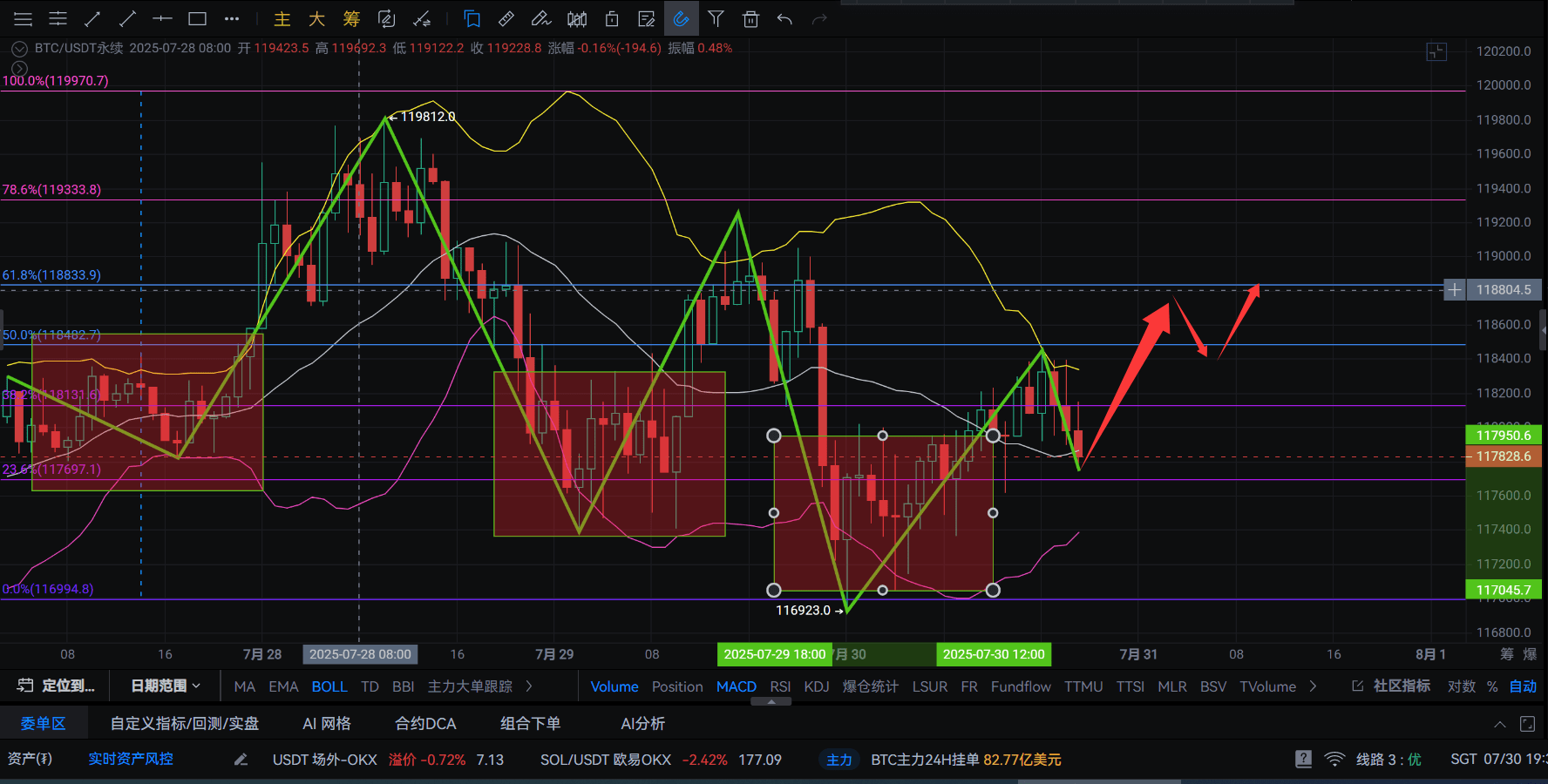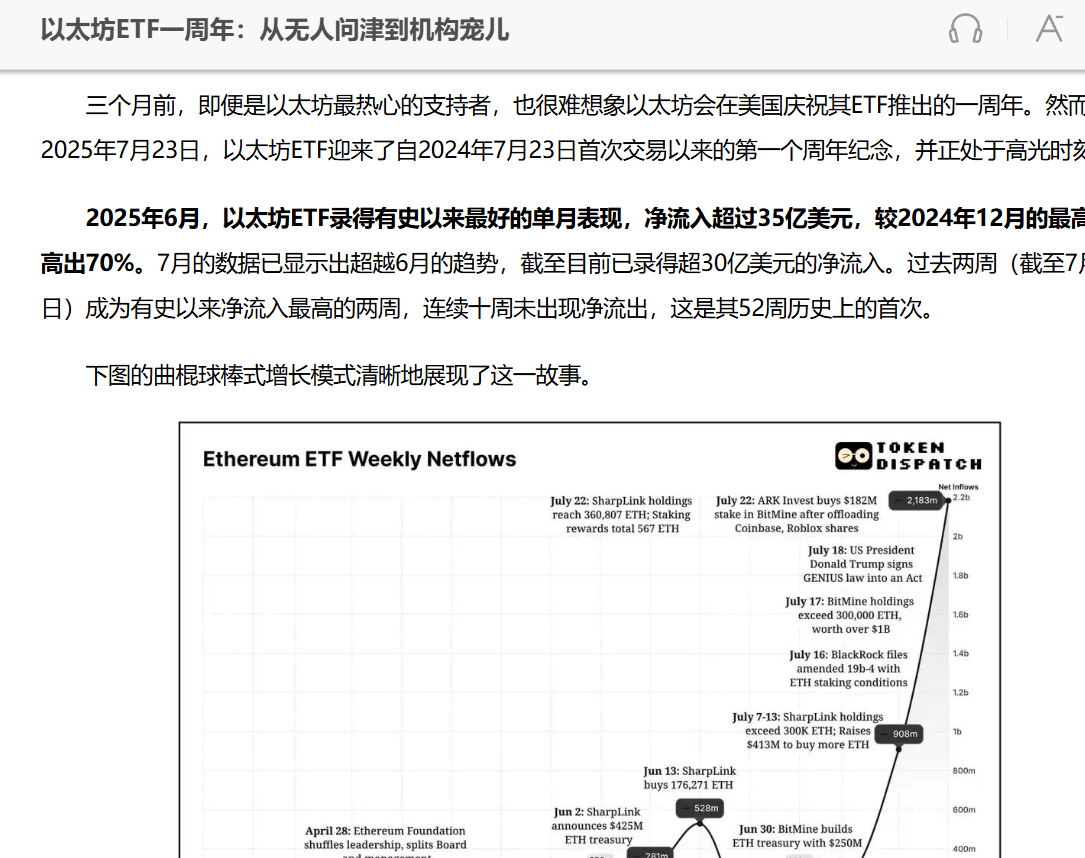A major earthquake in the crypto space! Bitcoin has just broken below the key psychological price level of 118,000 USDT, currently quoted at 117,968.27 USDT, with a 24-hour drop of 0.38%.

This volatility seems mild but hides secrets—why did BTC suddenly 'lose' key levels against the backdrop of institutional funds pouring in and the ongoing ETF craze? This article deeply dissects three core factors, revealing the truth behind this crash!
1. Technical front: Bears counterattack, 118,000 becomes the 'line of demarcation' between bulls and bears.
BTC briefly touched a historical high of $123,000 on July 29 before quickly encountering short attacks.
On-chain data shows that over $1 billion in short positions were liquidated within 24 hours, but bulls have not formed a sustained counterattack.
Technical analysts point out that 118,000 USDT is the 'golden ratio' for this round of increases, and a drop below it may trigger a chain of stop-losses.
What is even more concerning is that the 'funding rate' of BTC/USDT perpetual contracts has shifted from positive to negative, indicating a retreat in short-term bullish sentiment.
2. News front: Regulatory heavy blows land, U.S. policy shows sudden changes.
Just 24 hours before BTC broke below the key price level, the U.S. Securities and Exchange Commission dropped two 'heavy bombs':
Solana ETF approval delayed: Although the market generally expected the SOL ETF to be approved in July, the SEC requested additional materials from the issuer on the grounds of 'incomplete technical agreement audit framework', and the approval time may be extended to August.
(CLARITY Act) controversy: This act proposes to incorporate a 'decentralized maturity assessment system' into regulation, and some provisions are interpreted as 'indirectly restricting DeFi innovation', raising market concerns about 'excessive regulation'.
At the same time, the UK's Financial Conduct Authority announced that new regulations for stablecoins will be implemented on August 1, requiring issuers to fully collateralize assets and regularly disclose audit reports. Signals of tightening global regulation have led some institutions to choose to 'temporarily avoid the wind'.
3. Funding situation: Institutions 'reallocate and change stocks', highlighting the capital-absorbing effect of altcoins.
Despite short-term adjustments in BTC, institutional funds have not exited but have shifted to 'high cost-performance assets':
1. Solana chain ecosystem explosion: Solana, with its high performance and low cost advantages, attracts DeFi, NFT, and meme economy projects, with SOL price surging 80% in July, becoming the 'leading currency in this round of rebound'.
2. Ethereum ETF craze: Institutions like Fidelity and BlackRock continue to increase their holdings in Ethereum ETFs, with funds shifting from BTC to ETH, and BTC's market share dropping from 65% to 60.6%.
3. MicroStrategy 'increases positions against the trend': Corporate Bitcoin holding giant MicroStrategy has again purchased 1,500 BTC, but the market is more focused on its 'staking yield' strategy—earning 4%-5% annualized returns through lending platforms, suggesting institutions' tolerance for short-term volatility has increased.

4. The bull market is not over, but the 'crazy bull' will shift to a 'slow bull'.
Although BTC is under short-term pressure, the long-term trend is still favored by most analysts:
Macroeconomic benefits continue: Expectations for a Fed interest rate cut in September are rising, the U.S. dollar index is weakening, and BTC’s role as 'digital gold' will strengthen.
Institutional funds 'locked up': The holding costs of institutional ETFs such as Grayscale and BlackRock are mostly below $100,000, and the current price level has limited 'selling pressure'.
Strong technical support: BTC has broken through the upward channel of the 'fourth halving cycle'. If it holds the key level of 116,000 USDT, the next target may point to $135,000.
Chain circle suggestions:
Every pullback in BTC is an opportunity for the market to reshuffle. For ordinary investors, it is recommended:
Gradual accumulation: Gradually position within the 116,000-118,000 USDT range to avoid 'buying high and selling low'.
Allocate to altcoins: Focus on rotational opportunities in ecological projects like Solana and Ethereum, but control positions.
Keep a close eye on policies: New stablecoin regulations in Hong Kong on August 1 and the U.S. SEC's policy direction may become key variables.
The crypto space is never short of opportunities, what’s lacking is a calm mind and accurate judgment! Are you ready for the next surge?


